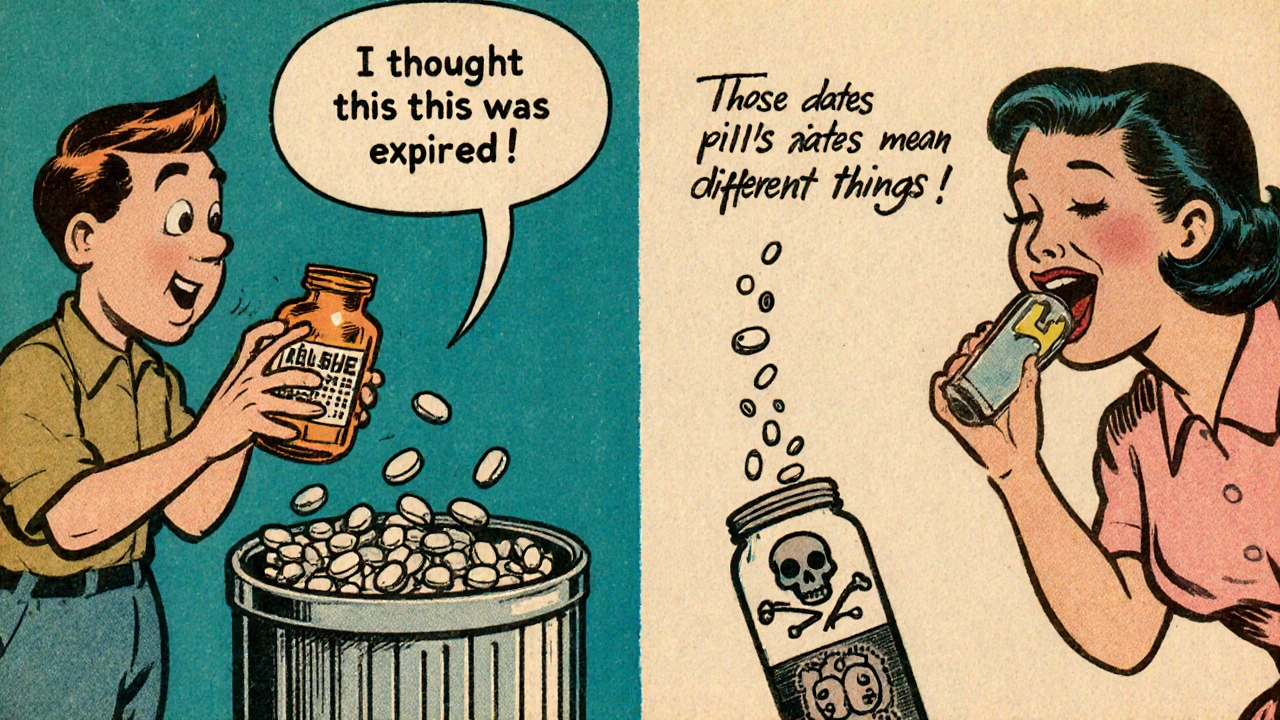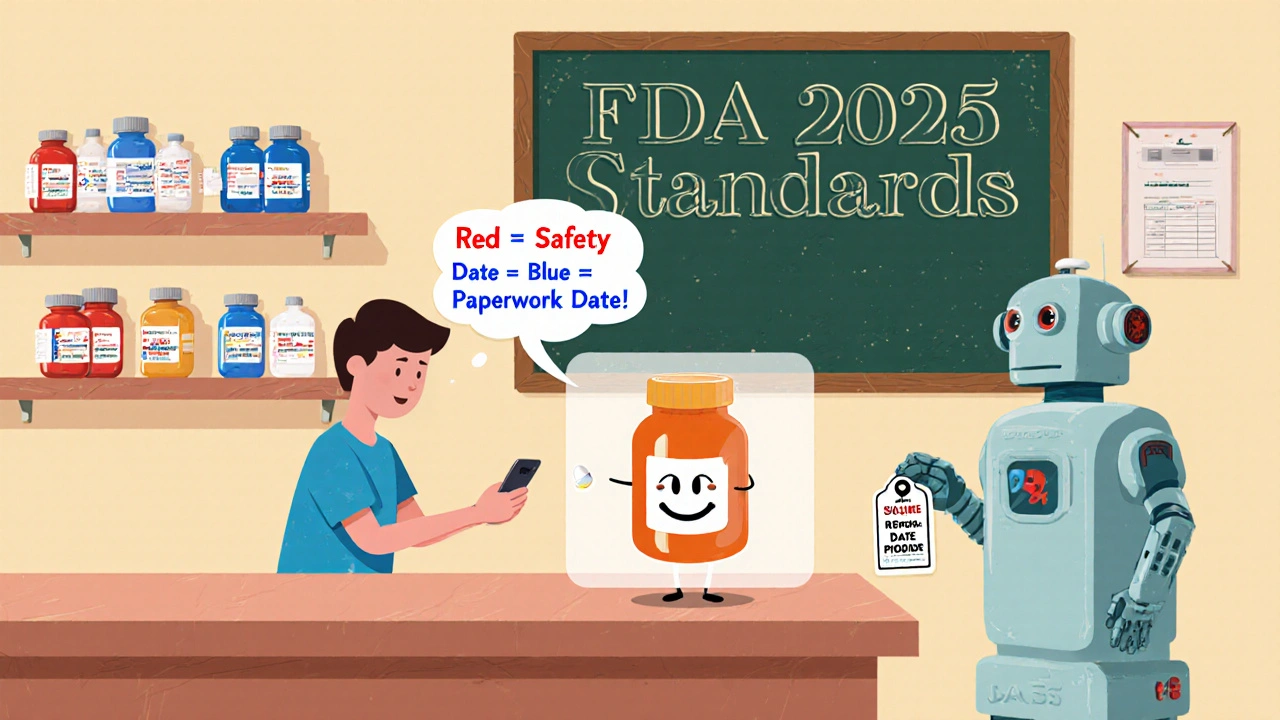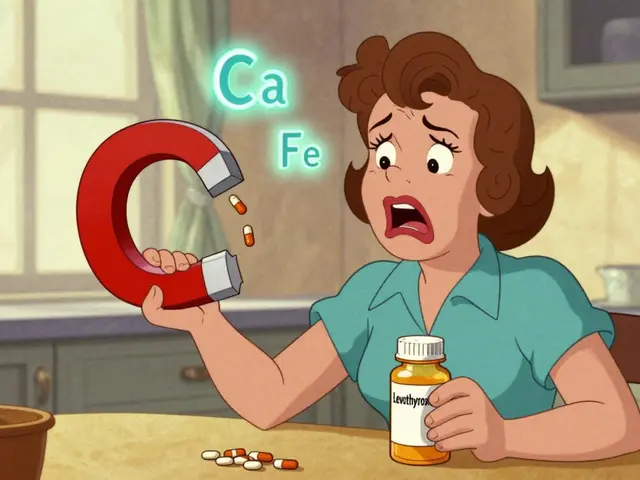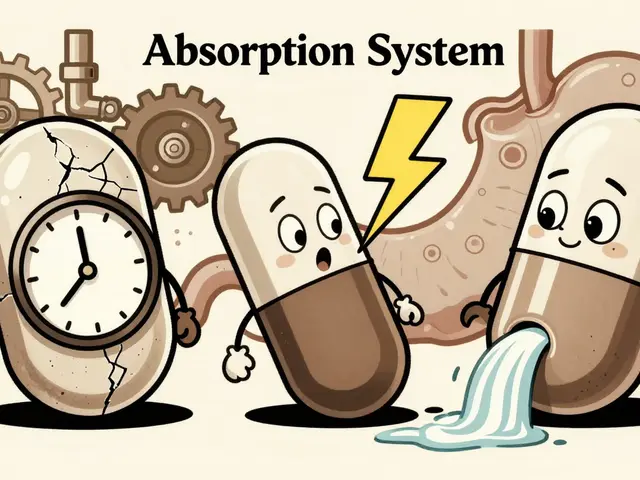Ever looked at your prescription bottle and wondered why there are two different dates? One says expiration date, the other says refill-by date. You might think they mean the same thing - but they don’t. And mixing them up could cost you money, time, or even your health.
What the Expiration Date Really Means
The expiration date on your prescription label is a safety cutoff. It’s not just a suggestion. It’s the last day the medication is guaranteed to be safe and effective, based on rigorous testing by the manufacturer and approved by the FDA. After this date, the drug might lose strength, break down into harmful compounds, or simply stop working.Pharmacies don’t just copy the manufacturer’s date. They often apply their own expiration date - usually one year from when the prescription was filled, or 30 days for refrigerated drugs like insulin. This is because once a bottle is opened and handled, environmental factors like heat, light, and moisture can affect stability. The FDA says you should never use medication past this date. Even if it looks fine, you can’t be sure it’s still safe.
Here’s the surprising part: studies show that many drugs remain potent years after their expiration date. The FDA’s own testing found that 88% of medications kept their strength past the printed date - if stored properly. But here’s the catch: pharmacists are legally required to follow the label. Even if your pills are still good, they can’t legally refill or dispense them after the expiration date. That’s why you can’t just keep taking old meds.
What the Refill-By Date Actually Controls
The refill-by date has nothing to do with how long the medicine lasts. It’s an administrative rule. It tells you the last day you can get more refills without your doctor writing a new prescription.This date is set by your prescriber and often tied to insurance rules or state laws. For most non-controlled medications, it’s one year from the original fill date. But for controlled substances - like opioids, ADHD meds, or certain sleep aids - federal law limits refills to six months. Some states go even further. California allows up to 12 months for refills on chronic meds; New York caps it at six months for certain drugs.
Think of it like a gift card with an expiration. The card still works until the date runs out - but after that, you need a new one. Same with your prescription. If your refill-by date is June 15, 2025, and today is July 10, 2025, you can’t just walk in and ask for another bottle. You need your doctor to reauthorize it.
Why People Get Confused - And What Happens When They Do
Most patients don’t realize these dates are different. A Consumer Reports survey found that more than half of people couldn’t tell the difference between the two. That leads to real problems.Some people throw away perfectly good medicine because they see a date and assume it’s expired. One Reddit user lost $300 worth of insulin after misreading the refill-by date as the expiration date. Others do the opposite - they keep taking pills past the expiration date, thinking they’re fine because they still have refills left. That’s dangerous. Even if you have refills, if the expiration date passed last month, you shouldn’t be using those pills.
Pharmacists say this confusion is one of the top reasons patients call in. A 2023 survey found that nearly 4 out of 10 pharmacy questions were about dates. And it’s not just frustration - it leads to treatment gaps. Medicare data shows that over 23% of patients miss doses or go without meds because they didn’t refill before the refill-by date expired.

How to Read Your Label - A Simple Guide
Here’s how to quickly tell them apart:- Expiration Date: Usually labeled as “EXP” or “Expires on.” This is the safety cutoff. Look for it near the bottom of the label. It’s often printed in red or bold.
- Refill-By Date: Might say “Refill by,” “Refills expire,” or “Last refill.” This is your administrative deadline. It’s usually near the number of refills left.
- Number of Refills Left: This is separate. If it says “3 Refills Remaining,” you can still get more - but only until the refill-by date.
Example: Your bottle says:
- EXP: 08/15/2025
- Refill by: 11/10/2025
- Refills left: 2
That means you can get two more refills - but only before November 10, 2025. After that, you need a new prescription. And even if you get a refill on November 9, you can’t use those pills after August 15, 2025.
What to Do When Dates Don’t Match
Sometimes, the refill-by date on your label doesn’t match what your doctor ordered. Maybe your doctor said you can refill for 12 months, but the pharmacy set it to six. Or maybe your insurance cut your refills short.Don’t assume it’s right. Call your pharmacy. Ask: “Is this refill-by date based on my doctor’s order?” If it’s wrong, they can fix it - but they can’t just change it without talking to your prescriber. The law requires that the label matches the prescription exactly. If there’s a mismatch, the pharmacy must contact your doctor before filling any more refills.
Pro tip: Keep a simple log. Write down both dates for each medication. Use your phone calendar to set a reminder 7 days before the refill-by date. That gives you time to schedule a doctor’s visit if needed.

What’s Changing - And What’s Coming
The system isn’t perfect. But things are getting better. Major pharmacies like CVS and Walgreens now use color-coded labels: red for expiration dates, blue for refill dates. Some stores are even adding QR codes to bottles. Scan it, and a short video explains the difference.The FDA is pushing for clearer labeling standards. Their 2023 draft guidance recommends using plain language like “Do not use after” and “Last refill date” instead of vague terms. By 2025, many prescriptions may include augmented reality labels - just point your phone at the bottle, and your phone shows you exactly what each date means.
But until then, the responsibility falls on you. Don’t rely on guesswork. Know your dates. Ask questions. And if you’re unsure, call your pharmacist. They’re trained to help you avoid mistakes.
Real Consequences - And Real Solutions
One patient with high blood pressure told Healthgrades she’s been on the same meds for five years - and never missed a dose - because she tracked both dates. She sets phone alerts. She keeps a small notebook. She calls her pharmacy before the refill-by date. That’s how she avoided hospital visits and kept her numbers stable.On the flip side, a 68-year-old man with diabetes ran out of insulin because he thought his refill-by date was the expiration date. He waited until the bottle was empty to refill - but the refill-by date had passed. He went without for 10 days. His blood sugar spiked. He ended up in the ER.
It doesn’t have to be that way. Understanding these two dates isn’t complicated. It’s just something most people never learn. But now you know. And that knowledge can keep you safe, save you money, and prevent unnecessary health risks.
Can I still use my medication after the expiration date if I have refills left?
No. The expiration date is a safety cutoff based on scientific testing. Even if you have refills available, you should not use medication past its expiration date. Pharmacists are legally required to dispense only unexpired medication. Using expired drugs can be unsafe - they may have lost potency or broken down into harmful substances.
Why does my prescription have a refill-by date if my medicine doesn’t expire for another year?
The refill-by date is an administrative rule, not a safety rule. It’s set by your doctor or insurance to limit how long you can refill a prescription without a new evaluation. Even if your medicine is still good, you need a new prescription after this date to ensure your condition is still being monitored. This helps prevent long-term use without check-ups.
What happens if I try to refill after the refill-by date has passed?
The pharmacy will not be able to fill your refill. You’ll need to contact your doctor to request a new prescription. This can take a few business days, so it’s best to plan ahead. Set a reminder 7-10 days before the refill-by date so you have time to schedule a visit if needed.
Are refill-by dates the same for all medications?
No. For most non-controlled medications, refill-by dates are typically one year from the original fill date. But for controlled substances - like opioids, stimulants, or benzodiazepines - federal law limits refills to six months. Some states have even stricter rules. Always check your label and ask your pharmacist if you’re unsure.
Can I ask my doctor to extend my refill-by date?
Yes. If you’re on a long-term medication and need more refills, your doctor can renew your prescription with a new refill-by date. Many doctors will do this during routine visits or via telehealth. Just don’t wait until the last day - give them time to process it. Some insurance plans also require prior authorization for extended refills.










Man, I used to throw out my blood pressure meds every year because I thought the refill-by date was the expiration. Then I almost died when my script ran out and I didn’t realize I couldn’t refill it. Never again. Now I screenshot both dates and set two alerts on my phone. One for refill-by, one for expiration. Simple. Life-saving.
Pharmacists aren’t trying to be jerks-they’re just following rules. But yeah, the labeling sucks. I’ve had bottles where the dates were printed so small I needed a magnifying glass.
India has no such confusion. We get medicine in blister packs with clear expiry printed in bold. No refill-by nonsense. American pharmacies overcomplicate everything. If your medicine works, use it. If it doesn’t, throw it out. No need for two dates. Just common sense.
Wow. Another ‘educational’ post that assumes everyone is an idiot. Of course the dates are different. The refill-by date is a bureaucratic loophole to force doctor visits. The expiration date? A legal shield for Big Pharma. You think people don’t know this? They just don’t care until they’re out of meds and the system fails them.
Bro I just asked my pharmacist yesterday about this and she laughed and said ‘most people think the refill-by is when it goes bad.’ Then she handed me a sticky note with both dates written on it. Like, why isn’t this on the bottle? Why do we have to ask?
Also, I keep my insulin in the fridge and it’s still good 18 months after expiration. But I don’t take it. Because I don’t want to be the guy who gets sued for using expired stuff.
This is such an important topic! In India, we often share medicines with family because of cost, so knowing the real expiration date saves lives. I always check the batch number and expiry. But the refill-by date? That’s just for paperwork. I tell my uncle: ‘If the pill still looks good and you feel fine, maybe ask your doctor before stopping.’ But never take expired pills. Safety first!
Thank you for explaining this clearly. More people need to know.
My grandma used to hoard her pills. ‘They’re still good, I can feel it.’ She had a whole drawer of expired meds. Then she had a stroke because her blood thinner degraded. I don’t say this to be dramatic-I say it because I watched it happen. Please, if you’re reading this: don’t be like her. Check the dates. Call your pharmacy. You’re worth it.
It is an egregious failure of pharmaceutical regulatory infrastructure that the layperson must navigate such a labyrinthine, inconsistent, and opaque system of temporal designation on prescription containers. The absence of a unified, federally mandated nomenclature-coupled with the perverse incentive structure of insurance-driven refill limitations-constitutes a systemic dereliction of duty towards patient autonomy and safety. One is left to wonder: is this incompetence, or malice?
Just saw this and immediately thought of my cousin. He took his anxiety meds past the expiration date because he didn’t wanna deal with the doctor. Ended up in the ER with a panic attack that wouldn’t quit. Turns out the meds lost potency. He was so mad at himself.
Anyway, I now have a sticky note on my fridge with all my meds and their dates. 📅💊 #dontbehim
Let me clarify, with precision: the expiration date is a scientifically determined, pharmacologically binding endpoint, beyond which the drug’s chemical integrity is no longer guaranteed; whereas the refill-by date is a purely administrative, regulatory construct, imposed by third-party payers and state statutes, with no bearing on pharmacological efficacy. Confusing the two is not merely a mistake-it is a failure of medical literacy. Please, for your own sake, learn the difference.
Of course you’re confused. The system is designed to confuse you. Pharmacies don’t care if you understand the labels-they care if you come back for another script. The FDA knows most drugs last years. But they won’t change the rules because it would hurt profits. This isn’t education-it’s control.
Thank you for this. I’ve been a pharmacy tech for 7 years and this is the #1 question we get. People think if they have refills left, the medicine is still good. Nope. I’ve had patients cry because they lost their insulin after the refill-by date expired-and they didn’t realize the expiration date was 3 months ago.
My tip: write both dates on the bottle with a Sharpie. And use the pharmacy app to get alerts. 📱❤️
I used to ignore these dates too-until I got my thyroid med refilled 6 months late and felt like I was back in 2018. Exhausted, shaky, brain fog. My doctor said, ‘You didn’t just miss a refill-you missed a checkup.’ Now I set a calendar invite 10 days before refill-by. It’s not a hassle, it’s self-care.
Also, if your doctor won’t extend it, ask for a telehealth visit. Most will do it for free now.
Why do we even have refill-by dates? In America, we’re told to trust our doctors, but then we’re blocked from getting our own medicine? This is why people hate the system. I don’t need some bureaucrat telling me when to see my doctor. I know my body. If the pill works, let me take it. Let me refill it. Stop treating us like children.